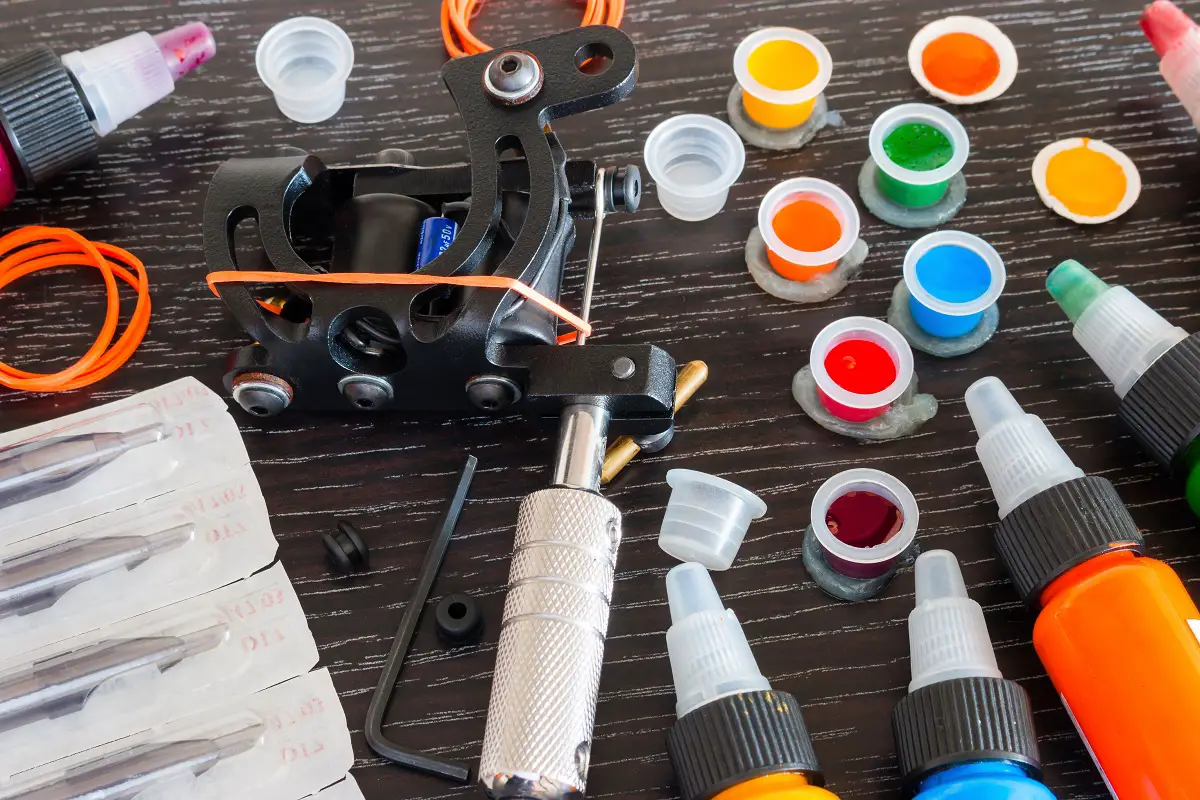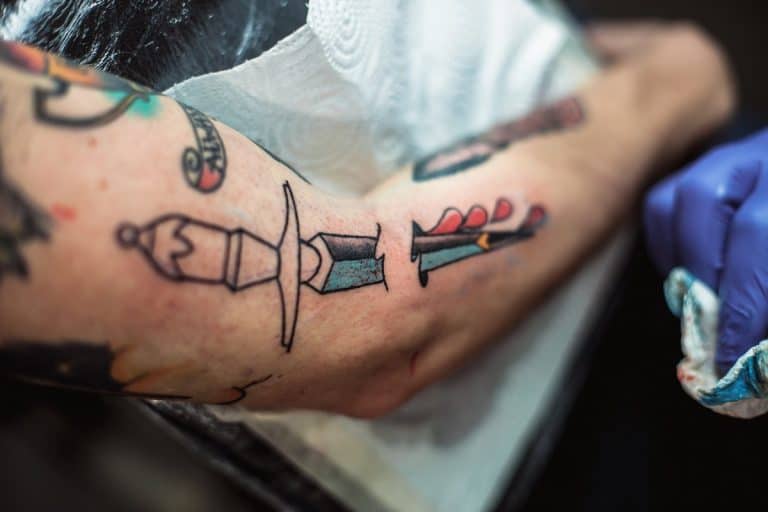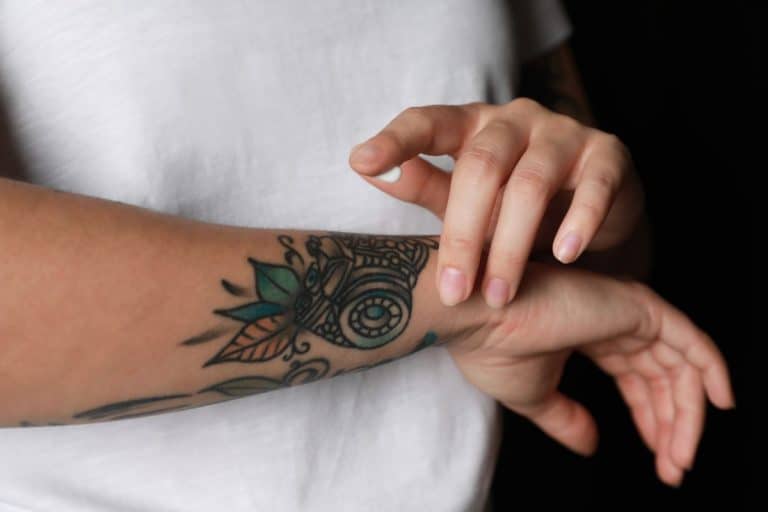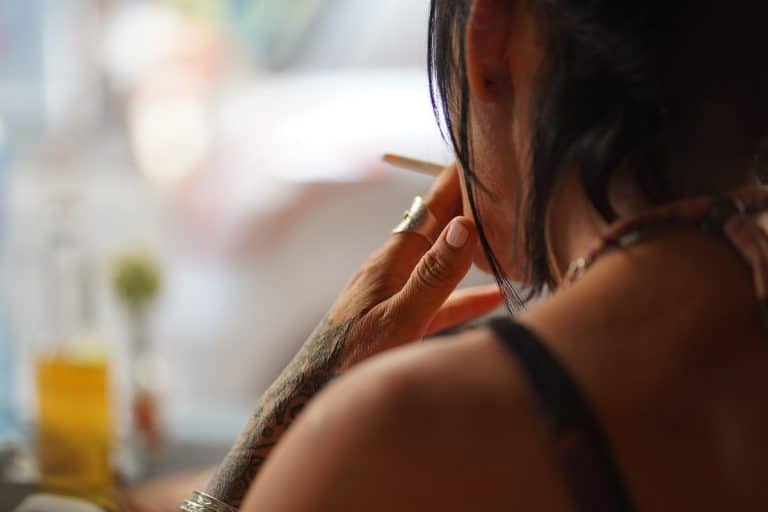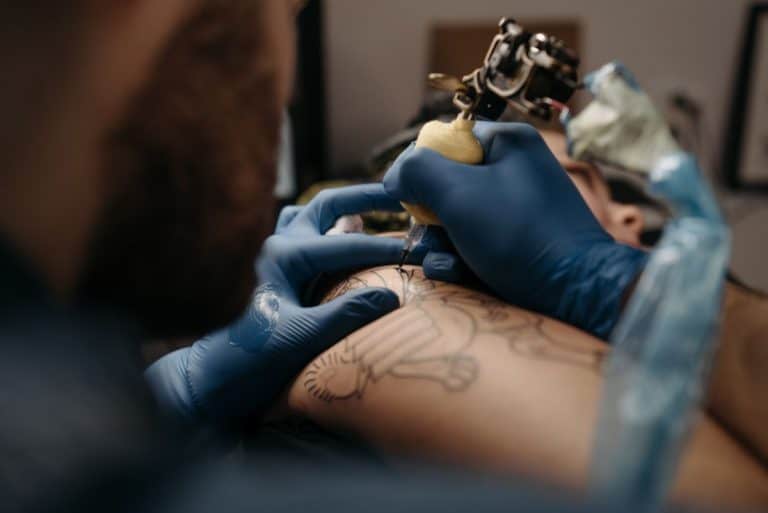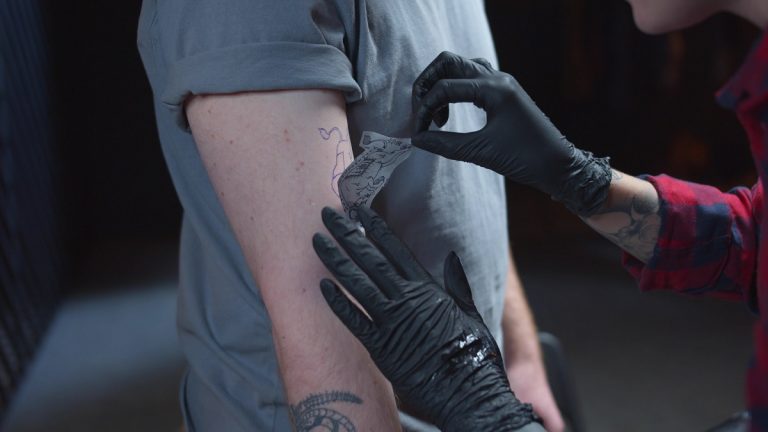Tattoo Chemistry: What is Tattoo Ink Made From?
For thousands of years, humans around the world have undertaken different kinds of body decorations, or tattooing, for religious and other reasons. So far, the oldest example and proof of tattooing is the 5,300-year-old mummy known as Ötzi. The mummy was discovered in the Alps and has 61 individually recognizable tattoos, all located near his joints. Because of the tattoo placement, researchers believe tattoos were used as some kind of treatment for joint pain or arthritis.
Nowadays, hundreds of millions of people are getting tattooed for numerous reasons; they’re either following trends, looking for a way to self-express, or try to stand out in the crowd. Whatever the reason is, tattooing has never been more popular among young, and even older adults.
However, it seems that people, thousands of years ago and now equally, don’t really look much into the very chemistry and ingredients used to make tattoo ink. With numerous tattoo and ink regulations seeing the day of light in European countries, the issue of ink ingredients is starting to grow in the States as well.
So, to make this issue more understandable for regular folks, we’ve decided to tackle the topic of tattoo ingredients and explain the chemistry of tattoos and inks. Hopefully, this will paint a clear picture of how dangerous and inadequately regulated tattoo inks really are.
Tattoo Ink Ingredients – Explained
What Is In Tattoo Ink?
To put it as simply as possible, tattoo inks of any kind comprise a tattoo colorant or pigment, and a carrier.
Tattoo colorants or pigments, contrary to popular opinion, are not dyes; these are colored compounds used to give the tattoo the needed color while remaining visible in the skin. Dyes require direct interaction with the skin to develop color, while ink colorants don’t require such a reaction, and ensure the color stays put in the dermis of the skin for years.
But, what are these tattoo colorants or pigments made of?
For years, colorants were made from carbon and iron oxide primarily. These mineral sources were used to make black ink. For other colors, like red, ink colorants were made from cinnabar, which is a mercury sulfide compound. For colors like yellow, orange, and shades of red, colorants were made from cadmium red and cadmium yellow.
Nowadays, carbon is the main basis for tattoo ink, counting for 80% of all ink being carbon-based. However, cinnabar and cadmium compounds are still used to make ink colorants, but in a smaller percentage. Since there is no direct insight into tattoo ink ingredients (and amount of ingredients used), we cannot say for sure how many tattoo ink colorants are cadmium- or cinnabar-based.
Carriers, on the other hand, are fluid ink components that can be either glycerin, isopropyl alcohol, witch hazel, or distilled water. These components are responsible for transferring the colorant or pigment to the so-called ‘injection site’, which is the dermis of the skin. When the carriers are alcohol-based, they help carry more pigment into the skin, due to increased skin permeability. Carriers keep the pigments evenly mixed and free of pathogens as well.
What Are The Exact Ink ingredients?
Before we get into the ink ingredients list, we do have to emphasize the following;
- In the United States, tattoo inks are supposedly under the authority of the FDA, as they’re considered to be cosmetics or color additives. However, this authority is rarely exercised. Moreover, tattoo ink manufacturers are not required to provide the exact ingredient list for their products, which makes the issue of questionable ingredients even more deeper and harmful.
Now, let’s get into the actual ingredient list of tattoo inks. So far, it has been discovered that the ingredient list varies depending on the type of colorant or ink color. For example;
- Black ink – generally carbon-based, contains iron oxide and potentially logwood. It is believed that black ink can contain bone back, powdered jet, wustite, and carbon soot as well. When it comes to carriers, there are generally isopropyl alcohol, witch hazel, and water.
- Red ink – cadmium-red based, contains cinnabar, iron oxide, and naphthol-AS pigment. Because of highly toxic ingredients, red ink is on the EPA list of the common causes of allergic reactions, infections, and cancer. When it comes to carriers, red ink usually contains glycerin, water, isopropyl alcohol, and acrylic resin.
- Orange ink – cadmium-based, contains cadmium seleno-sulfate and disazodiarylide. Orange ink contains the same carriers as other cadmium-based inks, like red.
- Brown ink – contains ingredients like clay earth (iron oxide mixed with clay), as well as raw ochre to achieve the yellowish-reddish-brownish color. When it comes to carriers, the ingredients are similar to the black ink carriers.
Other tattoo inks like blue, baby blue, indigo, dark green, and white vary in ingredients. They generally contain specific pigments, alongside the standard carriers like isopropyl alcohol, witch hazel, and water.
Are Ink Ingredients Toxic?
Now, mineral-based ingredients aren’t generally considered toxic. However, specific pigments can be toxic and harmful to one’s health in the long run. In some cases, specific pigments and toxic carriers can cause a direct allergic reaction, skin/tattoo inflammation, and infection. Some tattoo inks contain heavy metals and potentially harmful ingredients as well.
For example, red ink is considered to have some of the most toxic ingredients. A standard red ink contains aluminum, cinnabar, chromium, cadmium, hoof gelatin, cobalt, naphthol-AS pigment, and even denatured alcohols and formaldehyde (proven to be exceptionally toxic).
Among other ingredients, red ink (and other inks) can contain toxic components like ethylene glycol (antifreeze), rubbing alcohol, or animal-originating carriers like animal fat glycerine, cod liver oil, or beeswax.
We also have to mention the increasingly popular glow-in-the-dark tattoo inks, also known as UV inks. These are also considered toxic due to the ingredients like PMMA (Polymethylmethacrylate), also known as acrylic glass, or plexiglass. In the case of UV inks, the PMMA ingredient is suspended in UV distilled water.
When it comes to pigment carriers, the standard ones (like witch hazel, isopropyl alcohol, and water), are replaced with toxic carriers like denatured alcohols, rubbing alcohol, ethylene glycol, and formaldehyde. All of these ingredients are highly toxic and can cause skin burns, irritation, and serious skin damage.
Okay, so, tattoo ink can contain toxic ingredients. But, how are they exactly harmful in the form of a tattoo? Let’s find out in the following paragraphs!
Also Read:
Tattoo Ink and Health Concerns
Because of the questionable ingredients, and tattoo artists’ inability to truly know what the inks they use contain, there are some health concerns we should be aware of;
- Ink allergies are probably the most common side-effects of ink use. The reason allergies occur is the toxic ingredients, heavy metals, and questionable pigment carriers. Ink allergies manifest in the form of skin swelling, redness, rashing, burning, and skin hypersensitivity.
- Red ink, for example, is notoriously avoided because it is proven to contain cancer-causing ingredients. Red ink ingredients are even on the EPA list of common causes of allergies, infections, and cancer.
- One of the common side effects of tattoos is perpetual itching, especially in the case of cadmium-based inks, like red, yellow, and orange. Itching is a part of the natural tattoo healing process. But, in the case of these inks, due to the toxic ingredients, the itching can persist even beyond the healing process. This is a sign that the body is rejecting the ink and will simply never get used to the toxic ingredients.
- A recent case report shows that tattoo pigments can migrate into lymph nodes. As such, they can show up on medical scans as tumors, which can lead to unnecessary surgical procedures. For example, one woman was given a complete hysterectomy; later, she found out that the procedure was unnecessary since the lymph nodes contained tattoo pigment, proving there was no tumor, to begin with.
Also Read: Does Tattoo Ink Expire? Everything You Should Know
Are There Any Ink Alternatives?
So far, the most common alternative to the standard ink is the so-called vegan ink. This type of ink is believed to be more environmentally friendly since it supposedly doesn’t use animal-originating or carbon-based ingredients.
For example, animal fat glycerine is replaced with vegetable glycerine or plant oil in vegan inks. However, vegan inks can still contain toxic components and heavy metals, so they’re not completely safe and risk-free.
On the other hand, people are also increasingly choosing permanent tattoos, to avoid either full tattoo commitment or the dangers of getting an actual tattoo. The most popular choices are either a henna tattoo or permanent options like Inkbox tattoos.
However, henna tattoos aren’t completely safe either. For example, black henna is known to contain a toxic chemical known as paraphenylenediamine or PPD. This chemical can cause serious chemical burns and allergic reactions. Other types of henna, made from 100% organic dried henna powder, are generally safe for use.
Final Thoughts
Getting a tattoo can be a pretty risky choice. There are numerous side effects you can encounter, and you can’t even know whether you’re allergic to the ink until it’s way too late. So, before a tattoo, make sure to do your homework; research tattoo ink, potential side effects, ingredients that can cause you harm, etc.
You can even take an allergy test to see which ingredients could potentially trigger a reaction. Then, find a proper, experienced professional to do your tattoo. You can discuss the issue of tattoo ink with your tattoo artist and seek a potential, safest solution.
- Safe, non-toxic plant-based temporary tattoos made with 100% high-definition printing for a realistic look without the pain
- Easy to apply and remove - just stick for 20 seconds then take off
- Set includes 5 sheets with 17 fun, delicate designs like hearts, cats, smiles, suns, moons, and more
- Waterproof and long-lasting - stays on up to 2 weeks of wear
- Fashionable for women, men, girls and boys
- Place on arm, wrist, neck, leg, finger, waist, foot and more
- Great for parties, birthdays, and showing your unique style

